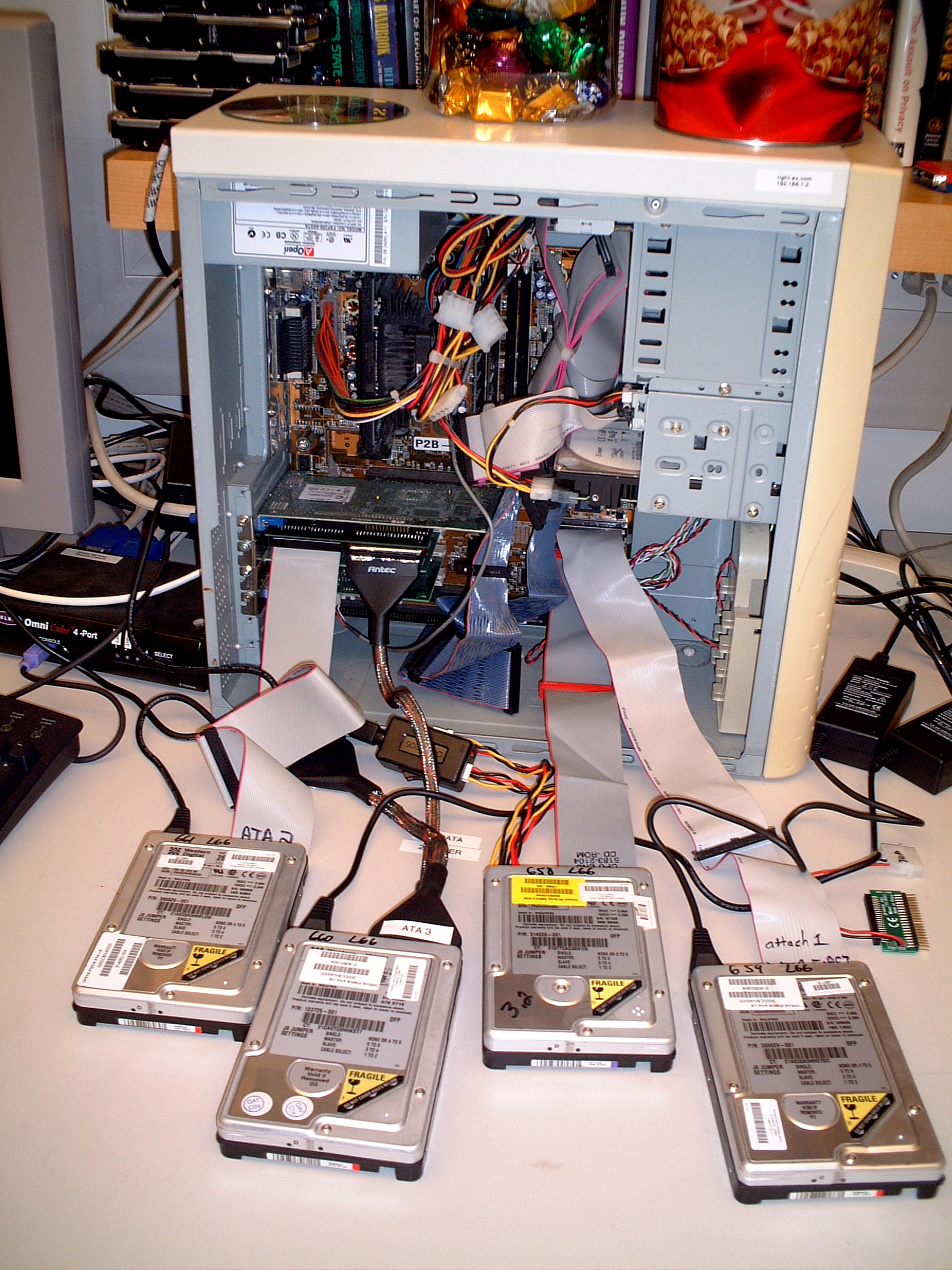Here is a photo of my disk imaging system:

Key elements of the disk imaging system:
- You need to have an internal IDE card which is not used for anything but disk imaging;
- You need to have an external hard drive power supply, so that you can power the IDE drives without using your computer's power supply (if you use your computer's power supply, you can easily crash your computer when attaching or detaching the power supply);
Imaging Checklist
- Set up a disk imaging station;
- You should have a 50-pin IDE ribbon cable going from your IDE controller to the desktop;
- Do not connect your imaging drive yet!
- Boot the computer into FreeBSD;
- Attach the IDE hard drive to the ribbon cable FIRST;
- Now, attach power to the IDE drive;
- You need to determine which ATA port the IDE drive is now connected
to. In all likelihood it is
ata0, ata1, ata2orata3. If you have an internal hard drive on an IDE interface, then the internal interface is probablyata0andata1and the external is probably onata2orata3; - You also need a place to store the AFF files you
are going to be creating. I usually put them in
/usr/affswhich is a directory you will need to create; - Log in as root;
- mkdir /usr/affs
- Now, try to image the drive with this command:
aimage ata2 /usr/affs/disk1.aff
- If this doesn't work, try:
aimage ata3 /usr/affs/disk1.aff
- If it works, you'll see the aimage program running.
What can go wrong
- aimage may not be installed. If you get the error message "aimage: command not found" then you need to install AFFLIB and then make sure that the aimage command (usually installed in /usr/local/bin) is in your PATH. You can check this out by running /usr/local/bin/aimage instead of aimage;
- Your source drive can be broken, aimage should tell you this;
- You can run out of disk space. You need a LOT of disk space to store disk images — figure 30GB to image a 60GB drive.
What to do after you have made your images
Once you have made a few images, you'll need to put them somewhere. Typically this means uploading them to a server.